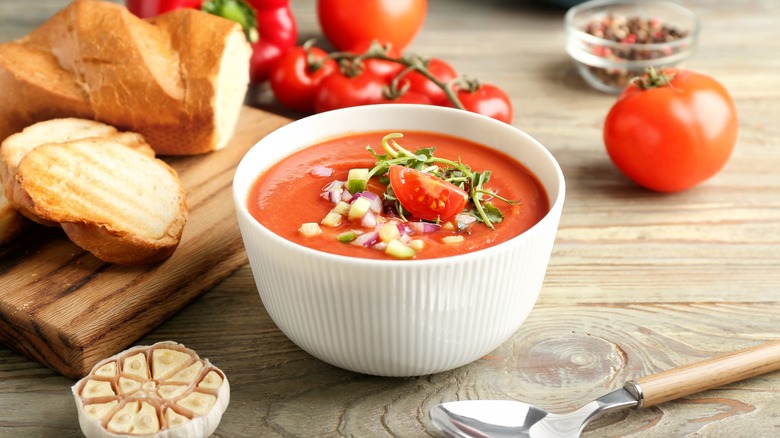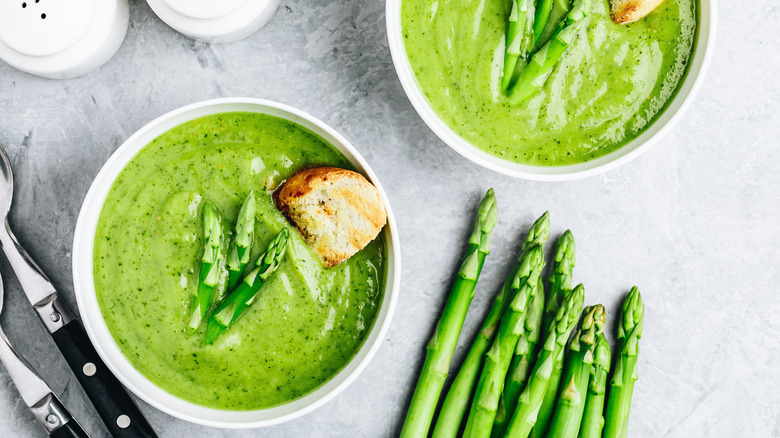Your Freezer Is The Secret To More Flavorful Gazpacho
It's common to wonder if soups, sauces, and dips hold up well when relegated to the frozen chambers of your refrigerator. Many foods thrive and survive beautifully when frozen, at least for short amounts of time — but others lose texture so quickly they're unrecognizable when thawed and sitting soggily on your kitchen counter.
Depending on consistency per recipe, ready-to-eat gazpacho stands up well to freezing temperatures. But can your freezer actually play a part in how you create that gazpacho in the first place? Actually, yes, and it can affect the flavor and smooth texture in significant ways.
A lot of fresh ingredients go into homemade gazpacho and drinks, most of them raw vegetables. We all love something that's simultaneously delicious and nutritious, and gazpacho fits the bill. Essentially a cold tomato soup, at least in its traditional form, a typical bowl of gazpacho harbors healthy doses of potassium and vitamins C, K, and A, according to Healthline. A primary ingredient, tomatoes, is flush in lycopene, which can help prevent some chronic diseases.
With all that goodness at stake, here's how your freezer can contribute to maximizing the flavor and smoothness of gazpacho soup recipes – before you even start combining the ingredients.
Breaking down those cell walls
Fresh, uncooked vegetables are well known for losing crunchy or firm texture when frozen, even when blanching them first. This is especially true for tomatoes and cucumbers, which feature heavily in most gazpacho soup recipes. Since smoothness and soft composition is highly valued in gazpacho, vegetables bound for both red and green gazpachos are ideal candidates for freezing. But the convenience of using readily accessible frozen veggies is not the only reason to pop those tomatoes, peppers, cucumbers, onions, and garlic bulbs in the freezer.
The makeup of most vegetables is 90% water residing within rigid cell walls, which is what provides the characteristic texture and structure when raw. If those vegetables reach freezing temperatures, the water inside the plant cells freezes and expands, and the cell walls fracture, resulting in a soft, pulpy consistency that works well in gazpacho soup.
That's not all the freezing process does. The executive chef of Pippin Hill Farm & Vineyards, Ian Rynecki, tells Food & Wine that when the destroyed cell walls release gases and break down the vegetables, you get more flavor from the resulting thawed liquid. Adding it to your gazpacho gives more depth and intense piquancy to the soup, and if your gazpacho recipe calls bread cubes, they will instantly soak up that extra goodness.

